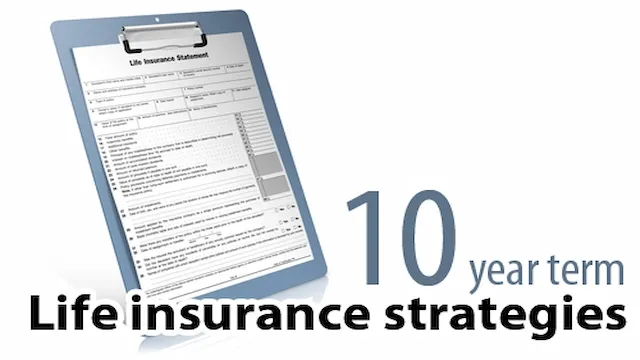Each decade of adult life presents a unique set of needs for life insurance.
As the most affordable type of life insurance, 10 year term life insurance is an excellent financial tool, which is designed to mitigate the risk of loss. Understanding the flexibility presented through term life insurance is important for the insurance seeker.
TERM LIFE INSURANCE
- Rates are based on mortality rates at each age.
- Annual premiums remain constant throughout the policy term.
- At the end of each term, the annual premium is adjusted, and the policy is renewed.
- Younger people will pay less money for the term life insurance policy.
- Large death benefits are affordable for the most expensive times of life.
- Multiple policies can be in force for the same person.
- Major insurance providers offer 10 year term life insurance policies at affordable rates.
TERM LIFE INSURANCE THROUGH EACH DECADE
Insurance is designed to mitigate the risk of loss. In life insurance terms, sufficient coverage will reduce the risk of the premature death of a wage earner. An accident, or illness, can happen at any time. The long-term dreams of a family, including college educations, should never be left at risk. Many different uses for life insurance will arise throughout the life of an individual and family.
20s – Young professionals can purchase life insurance to protect a spouse and young children.
- Active young adults rarely believe life insurance is important. Life insurance can prevent severe financial hardship for a young family.
- Sufficient coverage must exist to repay the mortgage and provide cash for two or three years of family life.
- Insurance policies on both spouses should be maintained since the children’s daily care needs must be covered if their mother passes away.
30s – Business owners can use a term life insurance policy for many different reasons.
- To sustain the business through the transition if the owner passes away.
- Key-person insurance for those who have invaluable expertise.
- Cover buy/sell agreements if one partner dies early in the life of the business.
- Repay loans that would come due if one business partner dies.
40s – College educations can become reality if the primary wage earner passes away while the young person is in college.
- Life insurance is not tied to the health of the policyholder as long as the policy was already in force when a diagnosis was received.
- Proceeds are paid to the beneficiary following the death of the insured.
50s – Anyone with a large estate is wise to purchase insurance to cover the estate taxes for the family.
- Reasons for life insurance change after the children have left home and graduated from college.
- Older couples have unique needs for life insurance based on the financial assets that have been accumulated over a lifetime.
- Special consideration should be given to the care needs of the surviving spouse.
60s – Term life insurance provides funds that will cover funeral expenses and relocation costs for the surviving spouse.
- At some point, the expense of a term life insurance policy will become unaffordable. The older person must determine if another source of funds for final expenses would be a better option.
Policies that are issued later in life will be more expensive since the probability of paying the death benefit rises for the insurance provider.
LIMITATIONS OF TERM INSURANCE
Affordability is the primary feature of term life insurance, but in other areas, term life has some limitations. The insurance seeker should be aware of these areas to prevent surprises later.
- No cash value – All of the funds paid in annual premium are used to provide insurance. Additional funds are not collected to build a policy cash value.
- Term limit – The annual premium will remain the same during the first term of the policy.
- Premiums rise – After the first 10 years, the annual premium will rise each year. Unpredictable premiums can present challenges in some cases.
- No waiver premium – Term life insurance policies do not offer a way to pay the premium if the policyholder is unable to pay.
- Lapse is possible – A term life insurance policy will lapse if the premiums are not paid. Renewal can require a new policy to be underwritten.
- Maintenance – Term life insurance requires the policyholder to be aware when the term is about to expire. Premium changes can make the policy unaffordable after a certain age.
FINAL DECISION
Term life insurance is an excellent part of the overall insurance strategy. Additional insurance can be purchased for the 10-year term while other insurance policies sustain the insured over the long-term. Coupled with other policies, the term insurance policy provides affordable coverage for unique needs. Life insurance strategies can offer peace of mind for the wage earner with dependents in various stages of life.


